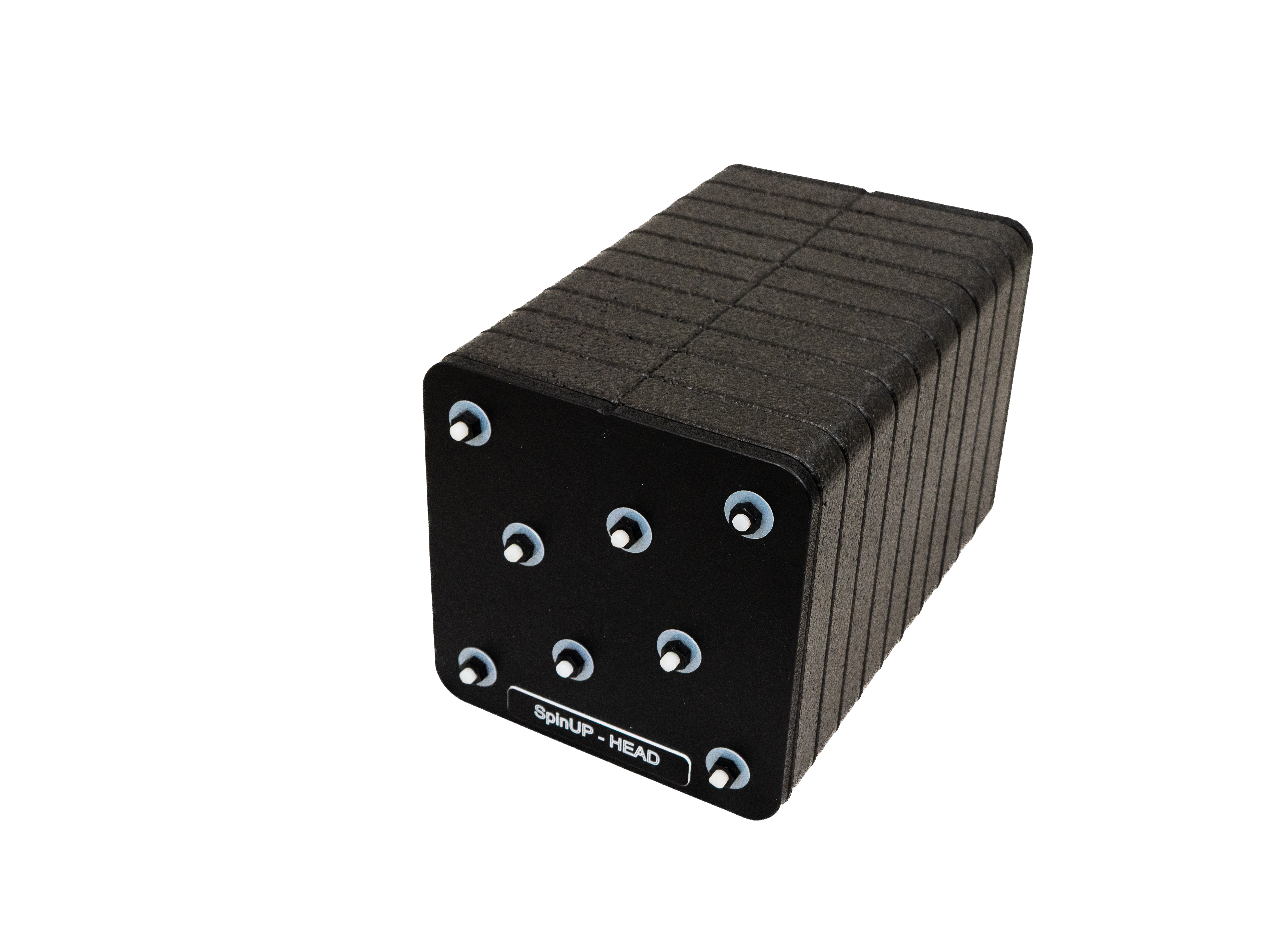Distributed by Gold Standard Phantoms in partnership with Spin Up
CARTESIAN3D
Precision MRI for Radiotherapy Planning and Stereotactic Treatments
MRI is increasingly used as the primary imaging modality for radiotherapy planning, MR-guided adaptive therapy, and stereotactic procedures. The CARTESIAN3D Phantom provides validated, routine QA and commissioning tools for measurement and correction of MRI geometric distortion across the full radiotherapy field-of-view.
Why MRI Geometric Distortion Matters in Radiotherapy
MRI geometric distortions from gradient non-linearities and magnetic field inhomogeneities can shift anatomical structures from their true physical location. These distortions are often small near isocentre but can increase dramatically in peripheral treatment regions.
Clinical Impact:
In SRS/SBRT, where planning margins may be 2 mm or less, even subtle distortions can result in underdosing the clinical target volume (CTV), overdosing critical structures (e.g., optic chiasm, brainstem, bowel, spinal cord), reduced tumour control, and increased toxicity and complications.
Accuracy in radiotherapy is spatial.
If geometry is wrong, the entire plan is wrong. The CARTESIAN3D Phantom provides validated tools for routine QA and commissioning of MRI geometric distortion measurement and correction across the full radiotherapy field-of-view.

Two Models for Complete Coverage
CARTESIAN3D HEAD
Dimensions
21 × 21 × 30 cm
Weight
~2.5 kg
Typical Use
SRS, intracranial RT, MR-Sim QA
Fiducials
440 spherical fiducials

Key Features
AAPM TG-284 compliant phantom design
Optimised 3D grid for high-resolution distortion assessment
Large field-of-view covering clinically relevant treatment volumes
No laser alignment required for fast, repeatable setup
Compatible with all MRI vendors and field strengths
Sub-millimetre accuracy distortion quantification
Automated cloud-based distortion analysis (CartesianQA)
DICOM distortion map export (TPS-ready)
CartesianRT module for radiotherapy planning workflow integration
Supports MRI simulation commissioning and acceptance testing
MR-Linac QA workflows
Annual physics checks and system baseline validation
Integrated Software Solutions
CartesianQA
Automated distortion analysis software with cloud-based or on-premise deployment options
- Fully automated distortion calculation pipeline
- Sub-millimetre accuracy distortion quantification
- Interactive 3D visualisation of distortion fields
- Compare differences between scanners, coils, and sequences
- Time-series trending for QA programme tracking
- DICOM distortion map export (TPS-ready)
- Secured DICOM protocol for image transfer
- Web-based results portal access
- Automated quality reports generation
CartesianRT Module
Treatment planning system integration for radiotherapy workflows
- Overlay distortion maps onto patient MRI
- Automatically adjust RTSTRUCT contours
- Quantify dosimetric impact via DVH comparison
- Distinguish detectable from clinically meaningful distortions
- On-site installation to avoid patient data web transfer
- Direct TPS compatibility
- DICOM RTStruct corrections
- Dose-volume histogram impact assessment
Clinical Impact
Without Distortion QA
- Target may be mis-localised by several mm
- Dose delivered ≠ dose planned
- Increased toxicity risk
- Reduced tumour control probability
- Uncertainty in treatment accuracy
With CARTESIAN3D QA
- Target location verified and traceable
- Dose delivered matches treatment intent
- Organ-at-risk sparing is preserved
- Higher therapeutic confidence
- Treatment accuracy, outcomes, and patient safety directly safeguarded
This system directly safeguards treatment accuracy, outcomes, and patient safety.
Product Gallery

Distributed and Supported by Gold Standard Phantoms
Clinical implementation support, MRI protocol guidance, QA programme integration, and ongoing performance advice.
Developed by Spin Up. Distributed and clinically supported by Gold Standard Phantoms.